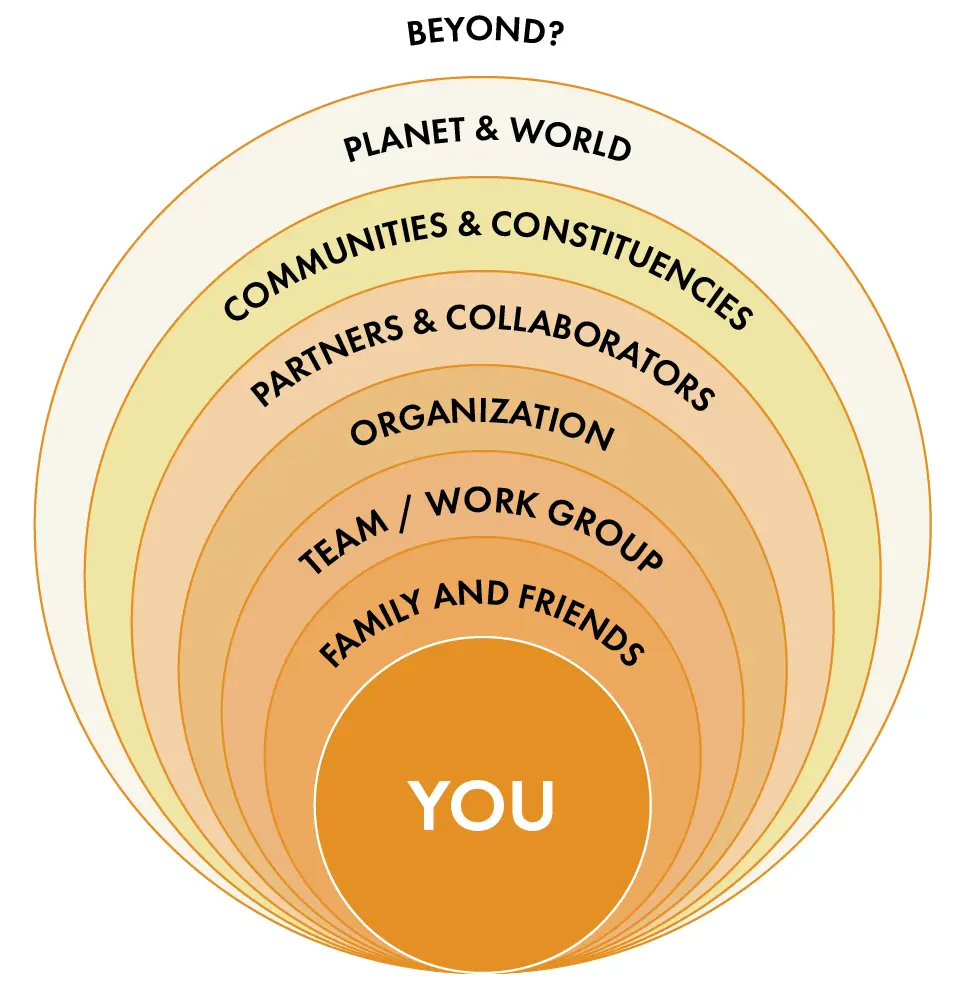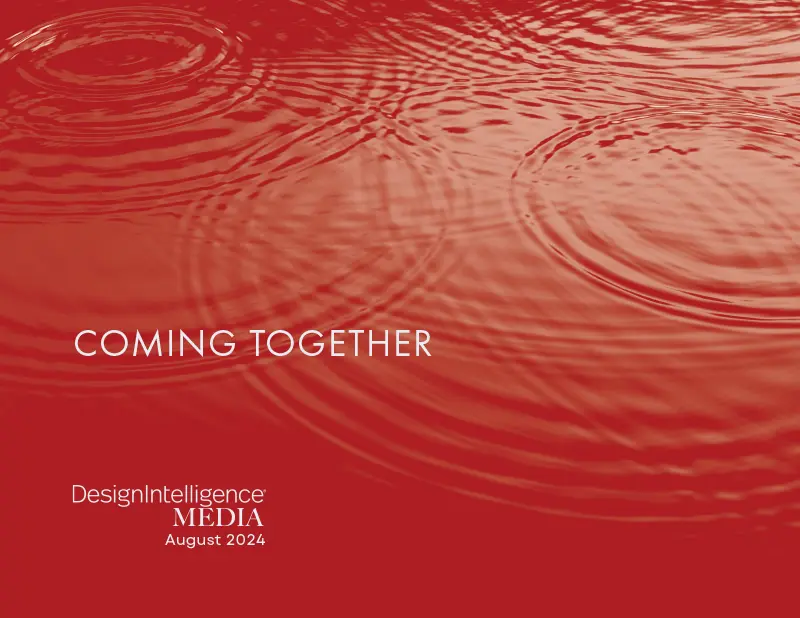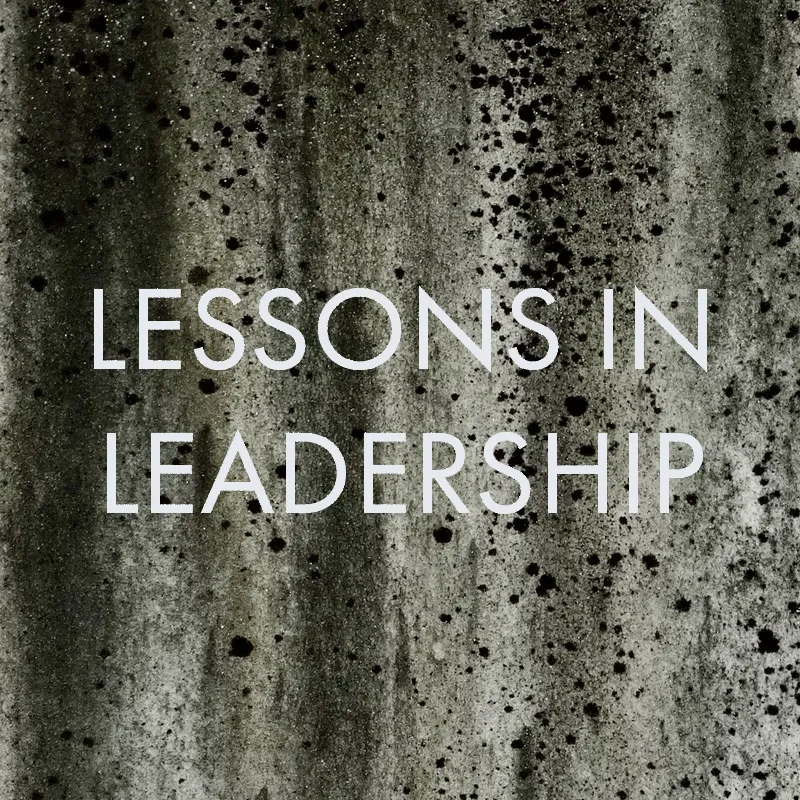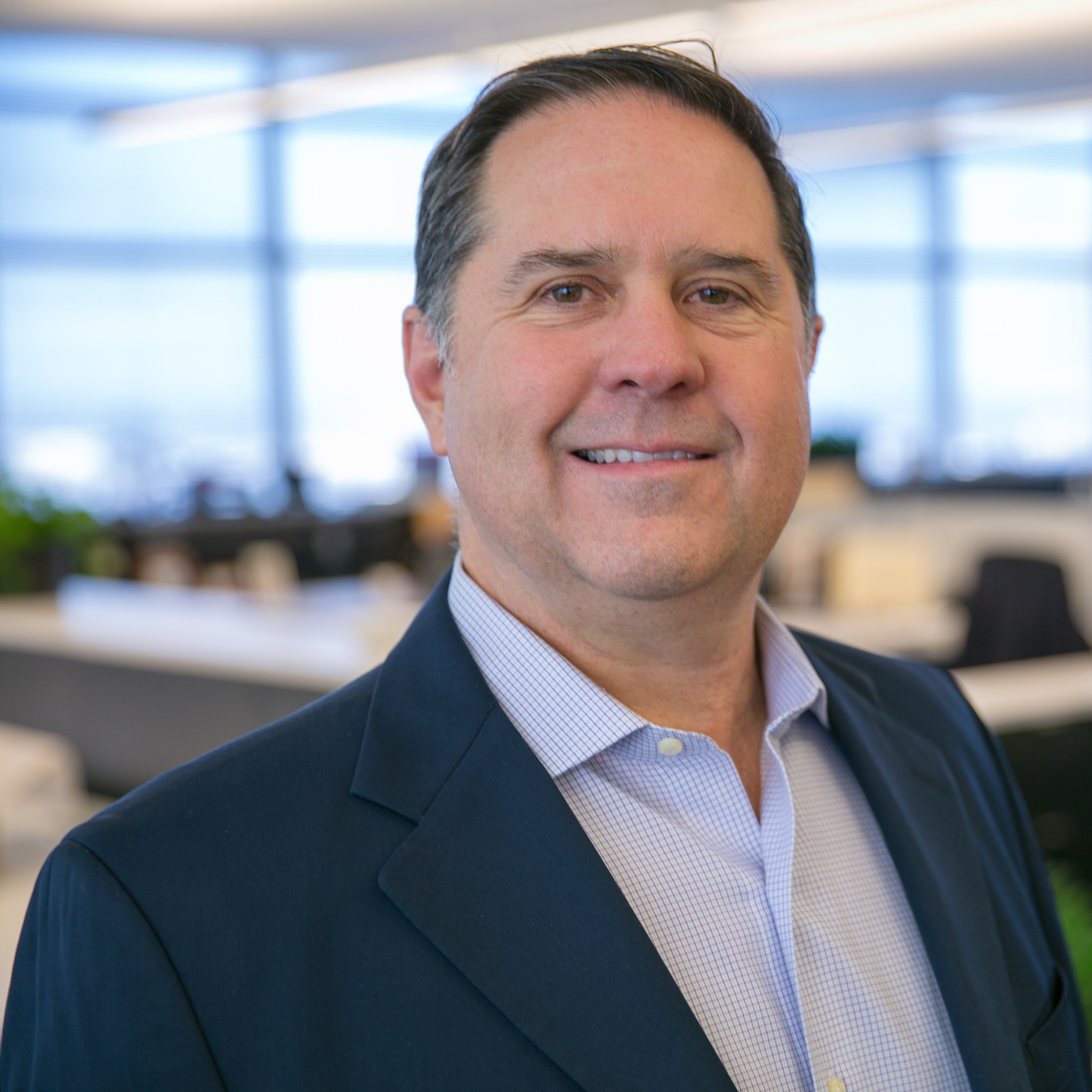
Coming Together
Michael LeFevre
Managing Editor, DesignIntelligence
August 7, 2024
Michael LeFevre explores decision scales and convergence.
“It really boils down to this: that all life is interrelated. We are all caught in an inescapable network of mutuality … a single
garment of destiny. Whatever affects one destiny, affects all indirectly.”
— Martin Luther King Jr.
As we contemplate our editorial threads for the year, issues such as leadership, artificial intelligence, organizational and technological futures, the academic/practice gap, responsibilities and economics and investment, the question of how these ideas are connected seem unavoidable. How do they connect? As we consider these connections and the essays and interviews we share here, it seems appropriate to consider the scales we operate within and the way we make decisions. As design professionals our task is often to diverge and explore uncharted possibilities, but in the end, true design synthesis occurs only when we turn the corner and bring things into unity. Each such act eliminates options and is a convergent act. But how do we accomplish them and what should we consider?
Decision Scales
Most of us who have had a design education of any kind are taught to think at multiple scales. Designing a house? Don’t forget to consider its site and community context. What about its regional impact or global repercussions? Moving inward to smaller scales, have we imagined the impact on the building users or next generation occupants? Even more minutely, have we looked at the details, furnishings, equipment and objects that will activate and enable the house? For designers, builders and users, all these scales deserve our attention. Much of the context has to do with how we make decisions. After all, making decisions, narrowing searches and moving divergent information into converged solutions is what we do. But how should we go about it in a connected world?
As each new input or decision enters our frame of reference, a nested set of moral, ethical and tactical questions emerges. To build a mental model of this framework, think of a series of nested concentric circles (or spheres, in three dimensions). Geographically, each circle potentially yields larger influence on a greater number of people in realms of increasing size and are farther away from us as individuals. But even if we understand the different realms and relatedness of each of these decision scales, how we integrate them constitutes the magic of good decisions – and good design.

You
At the core of this mental scalar galaxy is each of us. At each turn, you, as an individual, must assess each possible thought or its
related impact on you, your health and mental well-being, your core values and outlook on life. Is it right or wrong? Will it suit you? Will
you like it? Will you enjoy it? Is it something you must do? Is it a priority, urgent or important? Is it part of your long-term vision or a
distraction? At a Maslov-ian level, is it required for survival or self-actualization? If so, which? None of these decisions are purely
rational nor exclusively intuitive. That’s where the conflict – and fun – comes in.
Family and Friends
At the next-larger scale or sphere of influence, nested around the first one, lies each action’s potential impact on family and friends —
those we hold close and dear. If we do this thing, what would it mean to them? What would its effect be on the people we love? Should we
make this choice or take this action knowing its potential effect upon those we care about?
Team, Project, Department or Work Group
The next scale affects those you work with, are charged with, or a team you are a member of. Of major import in your and their daily work
and personal lives, does the decision to demand overtime, reject their design scheme or critique their work have project merit? What about
its personal and professional cost to them and their teammates?
Organization
The next scale to consider is your company, university, church — the organization to which you belong and devote most of your energy. Beyond
your project or team, how does your action affect your larger organization? If you are truly committed and convicted to the organization’s
mission, you care deeply about these impacts.
Partners, Collaborators and Clients
To grasp this next category, architects and engineers can imagine their consultants, subconsultants and clients, upstream and downstream.
Contractors might think of trade contractors, manufacturers or suppliers. Other businesses will immediately think of the customers,
manufacturers, vendors and suppliers that constitute their supply chain network.
Communities and Constituencies
In today’s world we have myriad constituencies to which we are beholden. Regardless of contractual or project scope limits, our work will go
on to affect a host of others beyond our project work. Now, we must ask: How do our design decisions and actions affect them?
Planet and World
Most of us have our hands, minds and hearts full simply dealing with our own terra firma — good old Planet Earth, our own site and its
nearby, tangible limits. In the years before global telecommunication, the internet and frequent air travel, our lives were much more
locally based. Now, how does our work affect downstream ecosystems, both natural and manmade? A few sage civilizations had outlooks that
transcended time and space; they understood the connectedness of things and valued preserving resources for future generations. Now, aided
by technology, most of us have a broader global view. We feel responsible for the global reach and consequences of our actions, or at least,
we should.
In a recent issue of Noema, Editor-in-Chief, Nathan Gardels expands on this new mentality in what he calls The Third Great Decentering, a paradigm shift from globalization to planetary governance. Citing authors Blake and Gilman, Gardels explains:
Globalization was about markets, information flows and technology crossing borders. The planetary is about borders crossing us, embedding and entangling human civilization in its habitat. That, in a nutshell, is the core thesis of a new paradigm-shifting book by Jonathan Blake and Nils Gilman titled “Children of a Modest Star: Planetary Thinking for the Age of Crises.”
The concept of planetarity describes a new condition in which humans recognize not only that we are not above and apart from “nature,” but that we are only beginning to understand the complexities of our interdependencies with planetary systems.
“If Copernicus’s heliocentrism represented the First Great Decentering, displacing the Earth from the center of the heavens, and Darwin’s theory of evolution by natural selection the Second Great Decentering, then the emergence of the concept of the Planetary represents the Third Great Decentering, and the one that hits closest to home, supplanting the figure of the human as the measure and master of all things,” Blake and Gilman write.
… “the Planetary as a scientific concept focuses on the Earth as an intricate web of ecosystems, with myriad layers of integration between various biogeochemical systems and living beings — both human and non-human. Drawing on earth system science and systems biology, this holistic understanding is being enabled by new planetary-scale technologies of perception – a rapidly maturing technosphere of sensors, networks, and supercomputers that collectively are rendering the planetary system increasingly visible, comprehensible and foreseeable.”
The open question is how, and if, human governance in the late-stage Anthropocene can align with the knowledge we are now attaining.
But Gardels observes a paradox:
… planetary-scale connectivity is also what divides us. Convergence entails divergence because the universalizing and rationalizing logic of technology and economics that ties the world together operates in a wholly different dimension than the ethos of politics and culture, rooted in emotion and ways of life cultivated among one’s own kind.
Such grand scale thinking might leave the average design firm leader stunned. It does me. And we are not yet at the end of the decision scale continuum.
Beyond?
With a few exceptions, most of us don’t extend beyond Earth in our daily lives. Save for scientists, philosophers, theologians and space
travelers, most of us are content with limiting our actions to life on our planet.1 But then there are
the ozone, global warming and other interplanetary questions. Yikes!
Decision Mechanics
Operating in and between these various decision realms and scales is a dynamic proposition. As each decision presents itself, information migrates quickly from its external source, penetrating these outer protective layers until it makes its way to you. You mull it over, all the while contemplating its impact on and relationship to the other surrounding scales. The idea moves quickly as you evaluate it, dashing from one scale to the next, and back, morphing between causes and effects. Should I take this commission? you wonder. It would be a highly visible and profitable undertaking, one good for me, my team and family. Perhaps we could buy a nicer car. (Do we need one? What are the hidden costs?) But the fact that it would require designing a building for a company that releases toxic waste into the environment or that is a well-known racist organization sheds a different light on that decision. What would our partners think? Accepting this job goes against all our values, so the answer is no. After bouncing around in several of the scale rings, in the end, the decision came to weigh heavily on the outer scale rings — those affecting others more than ourselves and, because of its clash with our core values in the inner ring, was rejected.
We make thousands of these kinds of decisions daily of varying magnitudes. How do we include other humans and their perspectives in the decisions we make? Do we value our encounters with them even if they come from different worldviews? Do at least listen to and consider them?
Scrap Metal (or Interpersonal Gold?)
Shifting scales significantly to the human scale, I share a personal anecdote. On a recent morning walk with a friend in Atlanta we passed an auto repair shop. Just as we walked by, an old man with a long, scraggly, white beard appeared, pushing a wheelbarrow filled to overflowing with scrap metal. Moved by his visage, I decided to reach out despite his apparent position in a different social circle.
“Are you retooling those, or are they scrap?” I asked.
“Scrap,” he said. “High-value stuff raht cheer,” he confided, as he loaded a brake drum into his truck with oil-stained canvas work gloves.
“Been doin’ it for 20 years. First for my stepson when he run it, but he passed away. Now, I does it for my grandson. He done took it over.”
“Do you take it down to Central Metals?” I asked.
“Nope, I got a loop I do. I take it over by Hiram.”
“You ever been to Wallace BBQ?” I queried, remembering it near Hiram, Georgia.
“Oh sure,” he replied, smiling broadly. “Have a good un,” he bid us.
“You too, sir,” we answered.
Our engaging him created a connection. In the space of a single random question, we had mined a gold nugget of interpersonal shared experience from a bedraggled man hauling scrap metal. He smiled, and so did we, as we resumed our walk. In recycling metal for reuse, he was making connections in several ways:
- Connecting with his grandson to remove the metal waste he didn’t have time to deal with.
- Completing the supply chain for reuse.
- Connecting with us, two other old fellows out for a walk, trying to stay connected to their health and to other interesting people they discover during their explorations.
Granted, this brief encounter didn’t necessarily help me make any decisions that day, but our convergence left me with a brightened outlook and a hopeful attitude about humanity with which to make them.
Laud is in the Details
Even at the most minute scale of architecture, seemingly apart from the human interface, at the connections and junctions of materials and humans, there are opportunities to express — or not — how they’re coming together. At each juncture, a decision must be made: Should the connection be expressed, flushed, trimmed, suppressed or exploited in some way? Perhaps even celebrated and highlighted? These inexorable decisions are ever-present in structural connections, convergences of interior finishes and materials and even in the treatment of mechanical, electrical and plumbing systems and human experiences. Each has the opportunity to transcend one scale and take us to another, enhancing the appreciation of the whole. Connection and convergence, it seems, are everywhere. At the least, their potential is.
You see, in design and construction, and in life with other human beings, working at multiple scales and bringing them together is the thing. That’s where the good stuff happens.
My wish for you is that things are coming together.
Footnotes:
1 I do have a nephew actively working on building a network to bring unmanned drones (think Jetson-esque flying cars) to the market in the next few years. Need to get to LaGuardia in a hurry? Got cash, digital or actual? Call AirUber, or SkyJetson, you’ll be there in no time. I also have a professional acquaintance who is working on the design of extra-planetary facilities, but those are clear exceptions.
Michael LeFevre, FAIA emeritus, is managing editor at DesignIntelligence; senior fellow in the Design Futures Council; and author of Managing Design (Wiley 2019) an Amazon #1 bestselling new release.
















